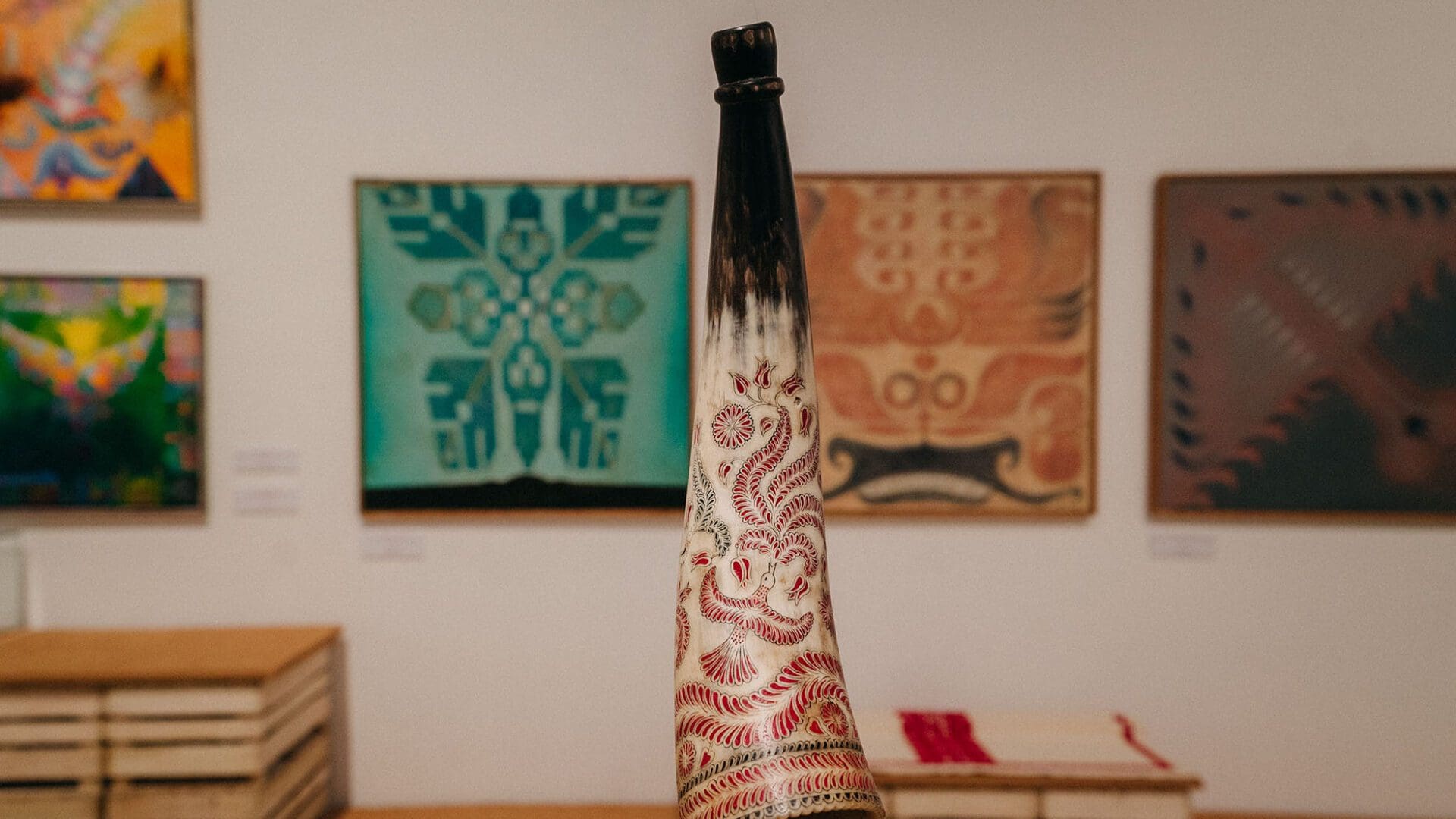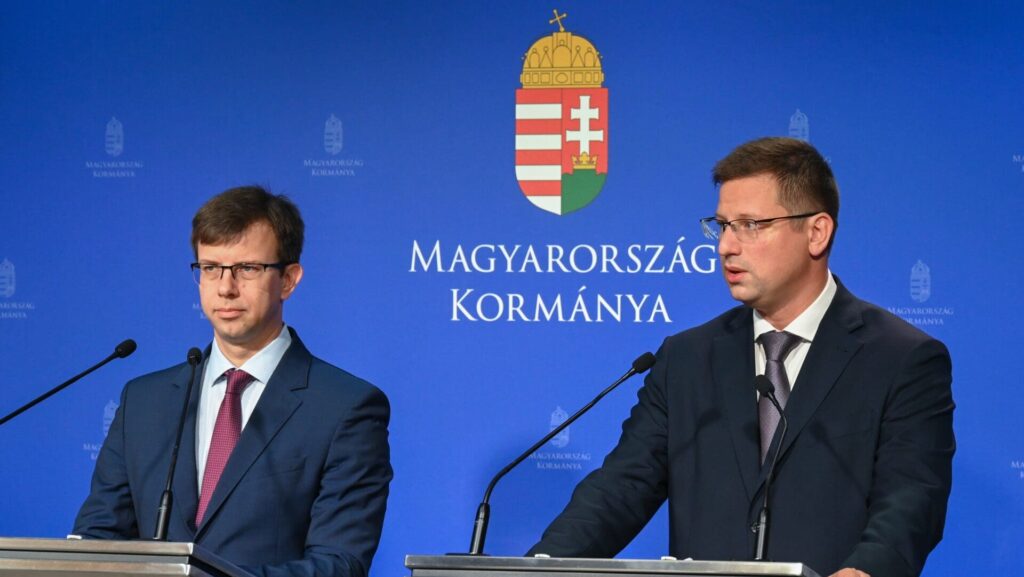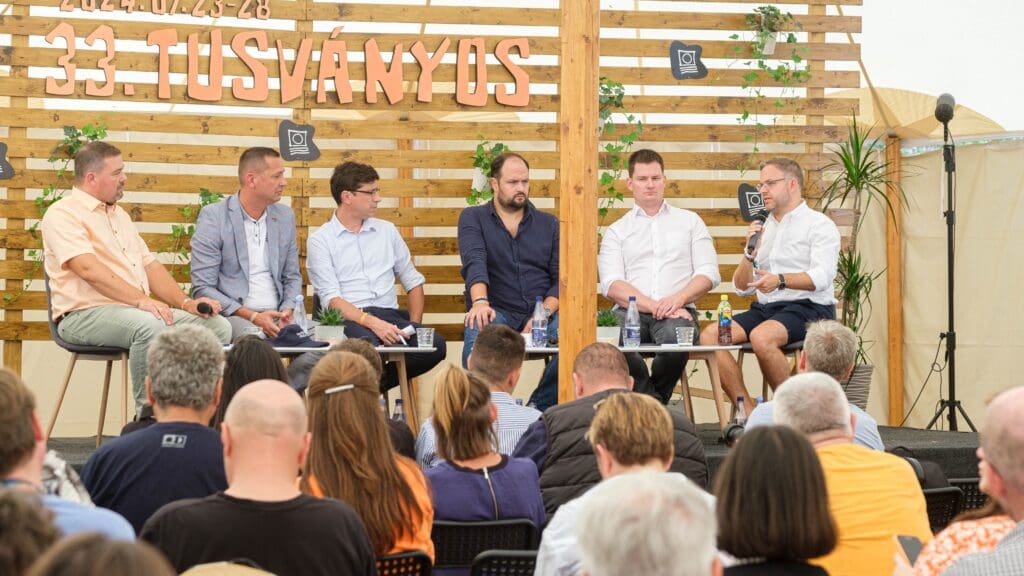The following is a translation of an article written by Anna Bakai, originally published in Magyar Krónika.
The unbreakable unity of Hungarian folk art and the possibilities of the continuation of Hungarian folk traditions are presented in the exhibition titled SoulShapes (LélekFormák), which can be visited at the Műcsarnok/Kunsthalle Budapest, an Institution of the Hungarian Academy of Arts, until 16 July this year.
‘Hungarian folk art passes messages from spirit to spirit, and although it has various ramifications, ultimately its unity is unbreakable’, chief curator Mihály Vetró says while glancing around in the first showroom of the SoulShapes exhibition. ‘After all, a girl embroiders the same thoughts and feelings into a handkerchief as the ones she sings about, and a young man expresses the same messages to his beloved one in a carving as in the dance in his men’s dance. Thus, these objects surrounding us here all embody feelings and thoughts,’ he adds.
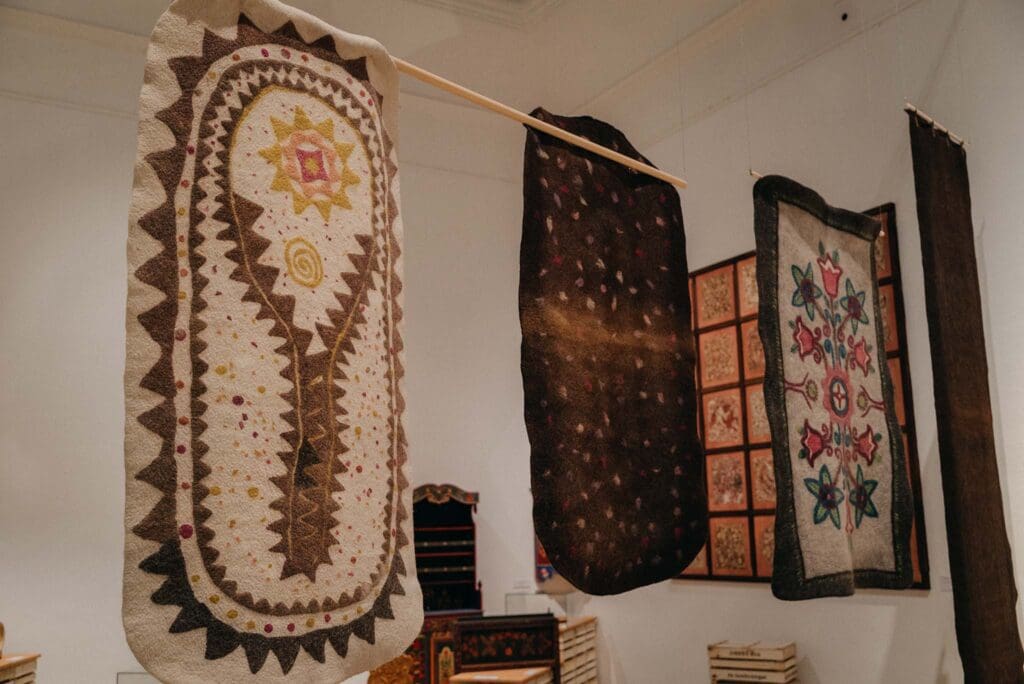
The exhibition concluding the 2nd National Salon of Folk Art seeks to present Hungarian folk tradition in its wholeness, and this wholeness can easily be felt while walking through the halls: the exhibition consists of works from all branches of folk crafts, a photo exhibition, folk music recordings, as well as a selection of ethnographic films. The latter is an excitingly contradictory part of the exhibition: it simultaneously talks about the extent to which the technical development of the 20th century contributed to the disintegration of traditional folk culture, but it also shows how much we owe to the same technique when it comes to the preservation, transmission, and relearning of memories.
A Modern Folk Tradition Reflecting on the World
‘We wanted to show the enormous role that certain workshops, communities, and families have had in the survival for centuries of folk art techniques, forms, and motif systems,’ co-curator István Kolozsvári recounts while introducing the showroom called ‘Inheritance’ (Örökítés), where we can get to know the dominant Hungarian families of various crafts. Their folk artworks clearly show how the knowledge that has been passed down from generation to generation evolved and became more refined. Wherever we walk in the exhibition hall, we can see tangible masterpieces of the past that live with us: in the Fazekas family of Nádudvar, the profession of pottery has been handed down from father to son since 1714; the woodcarver Hafner family has been making their decorative masks for the Walk of the Busós for four generations; and the Kovács family has been producing blue-dyed textiles since 1836. However, before visiting the exhibition, one should not prepare to see some kind of old-fashioned, dusty artifacts: these families having a great past cherish folk traditions and their own heritage while also reflecting on the continuous changes in the world around them.
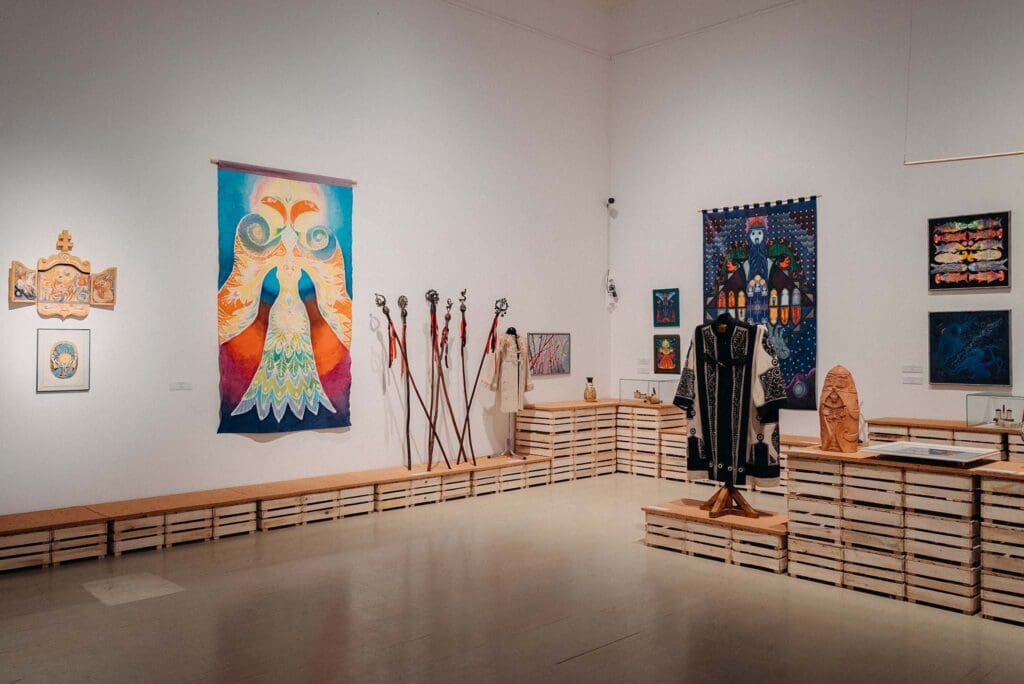
Waiting for Miracles in the Form of Artworks
This ‘living-and-creating-in-the-present’ manifest can be even more felt in the other rooms of the exhibition: in the hall called ‘Putting Forth Pearls’ (Gyöngyvel leveledzik), we can see the works of contemporary fine and industrial artists inspired by folk art. From enamel pictures to painted altars and reimagined traditional clothing, their creators, as István Kolozsvári put it, ‘committed themselves to ennoble the shapes of the Hungarian soul into objects’. Visitors, however, may wonder what the organising principle is among these extremely colourful artworks. The answer may be found somewhere in the process of waiting for miracles: every exhibited object explores the miracle, the magic, and the mysticism that surrounds us and it is quite interesting to inspect where a painter, a horn carver, or an embroiderer gets at from the same starting point and from a similar spirituality.
The exhibition hall named ‘Thirty-three’ (Harminchárom) appears to be essentially about the future and the promise of the survival of folk art traditions: in it, thirty-three, at most thirty-three-year-old artists present themselves, only a few of whom learned their craft in their families and who were thus not given the opportunity to become conscious about traditions organically, from their birth. Most of these artists only got familiar with folk arts and crafts at the Nádudvar Vocational Boarding School of Folk Crafts and committed themselves to traditions there.
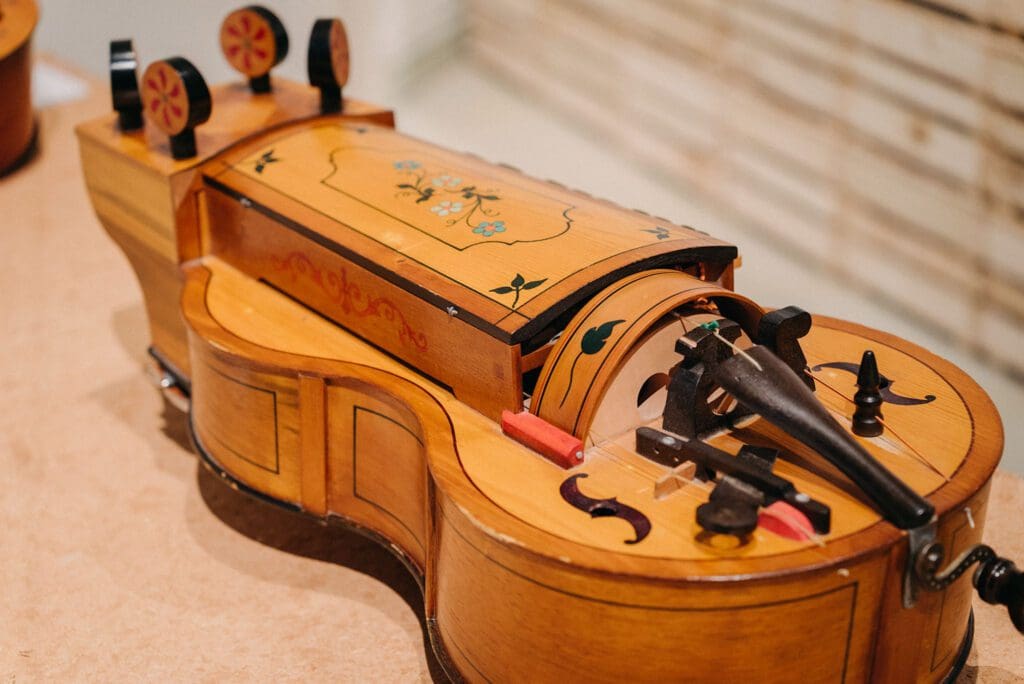
Sustainable Folk Art?
‘Folk art is not just a community creative process. It is a living, forward-looking, contemporary thing that offers solutions to many of our society’s problems, as it teaches us a lot about sustainability, a liveable environment, and waste management. Our ancestors knew exactly that everything can be reused, and nothing is waste,’ co-curator Béla Szerényi, who compiled the musical pieces for the exhibition, points out. Walking through the halls of the exhibition, it is not really hard to see that back then, just like traditional folk art, the production of everyday objects used to be sustainable, too, since the people of past times could afford wastage in the rarest of cases. A piece of clothing often used to be worn by several consecutive generations, and when it was finally beyond repair, it was recycled, for example, by weaving it into a rug or a bedspread, which was then used and mended to immensity. The exhibition also bows its head to these forgotten and despised virtues sacrificed on the altar of consumption, and attempts to prove that it is indeed possible to be modern without setting fire to the whole world around us.
Related articles:
Click here to read the original article.

